The graphs and statistics in Figures @Ref(fcogact1) and @Ref(fcogact2) show that synchronous dyads produced larger numbers of verbal elements demonstrating attention to managing of the task, problem formulation, and interactive arguing. Counts for these categories are emphasized because the differences between the groups resulted in at least p < .05 significance when the t-test was applied (using separate variances and one-tail probabilities). The synchronous group also produced larger numbers of verbal elements demonstrating attention to arguing (total), giving information, and asking for information, but the differences were less significant than those of the higher-order cognitive tasks mentioned previously. For "giving opinions" and "clarifying", the average for the asynchronous group was higher than that for the synchronous group by slight margins.
Figure 4-9: Cognitive Activity Counts (1)
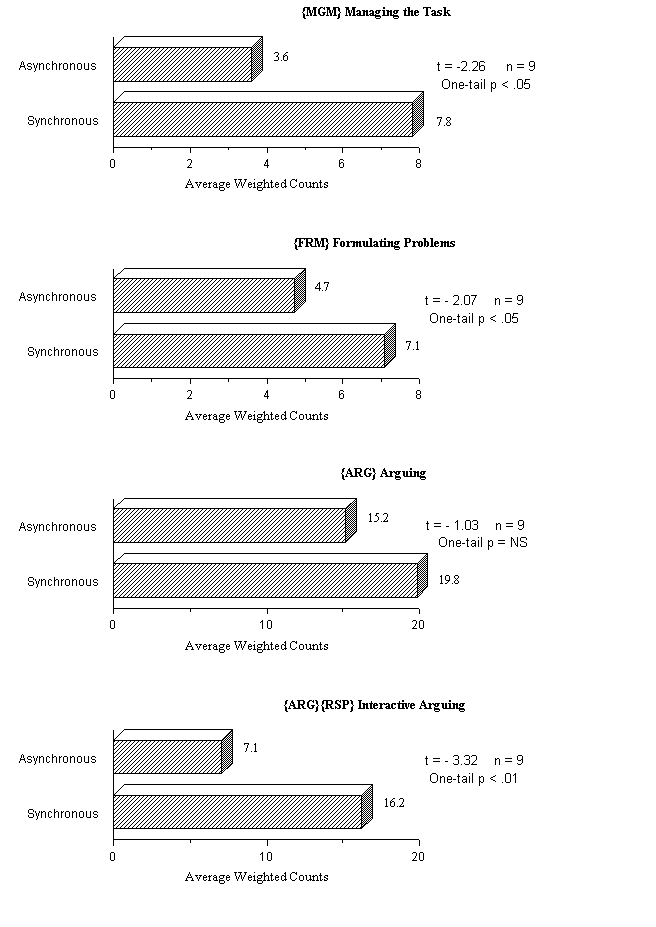
Figure 4-10: Cognitive Activity Counts (2)
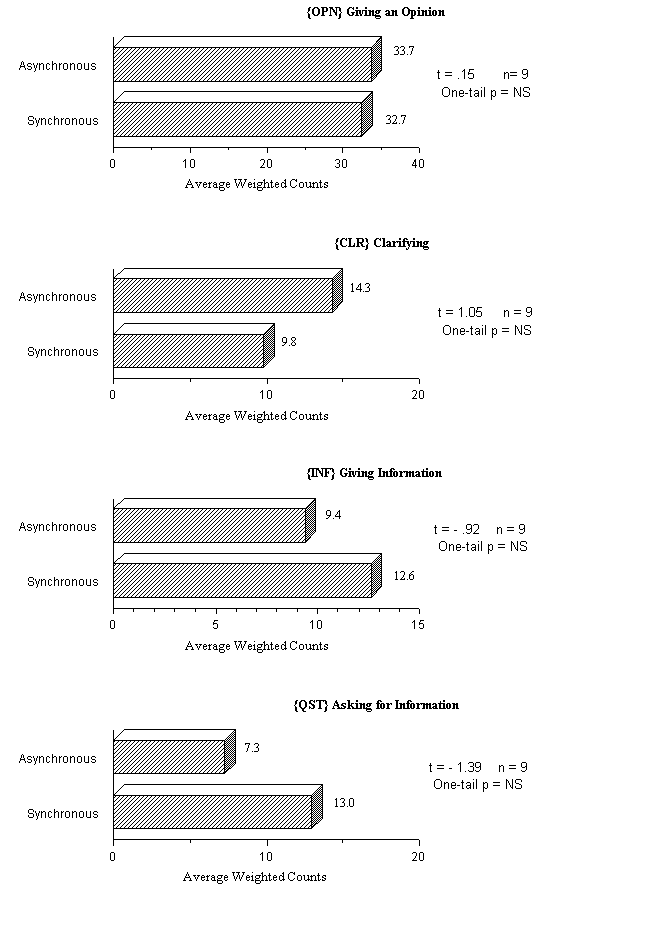
In fact, when the counts for all cognitive activity were combined, there was little difference between the two groups (see Figure @Ref(fcogact3)). Obviously, however, when the key cognitive activity counts where combined ({MGM}, {FRM}, and {ARG}{RSP}) the difference was considerable (and significant by the t-test (p < .001)).
Figure 4-11: Total and Key Cognitive Activity Counts
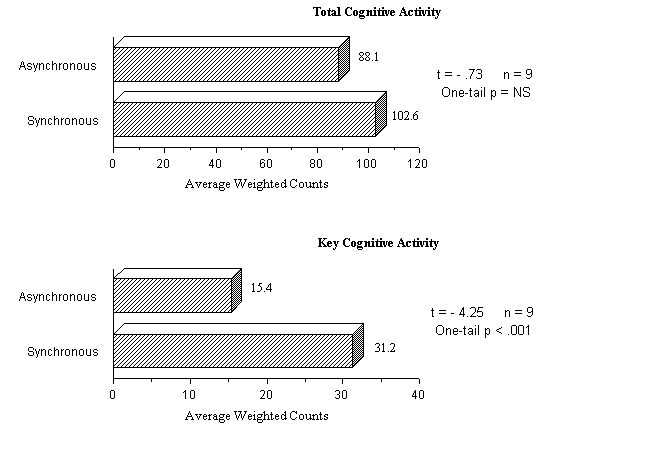
4.3.2 Cooperative Activity
Cooperative activity was measured by counting verbal elements in the transcripts which were categorized according to the criteria adapted from Beckwith (see Section @Ref(ssdaprepcode)). Two code categories were used: {FCL} - facilitative and {DBL} - debilitative (for further description, see the table on page @PageRef(tabconcod1)).
In Figure @Ref(figexcerp2) the {FCL} code is shown as it is applied independently to the expression, "That's all I can think of" since it acknowledges a limitation in the current thought process of one member of the dyad and thereby prompts the other member to provide assistance in the form of more ideas. {FCL} is also applied in conjunction with {OPN} for the expression, "Counselling is a great idea" since this is both the opinion of nurse 35 (that the idea is good), and an encouragement through the use of "great". Similarly, as noted in the previous section, questions that were used more for prompting one's partner than for requesting information were coded {FCL}{QST}.
Debilitative statements did not occur frequently. The average was less than one per dyad for both groups, and they did not occur at all in most of the discussions. When they did occur, they either protested the task at hand as in, "Do we have to do those retarded >as manifested by's Generally, in terms of cooperative activity, Figure @Ref(fcopact1) shows that the synchronous pairs demonstrated a larger portion of facilitative exchanges. These included efforts by the participants to make each other more comfortable, as well as clear statements of support, understanding, and encouragement.
Figure 4-12: Cooperative Activity Counts
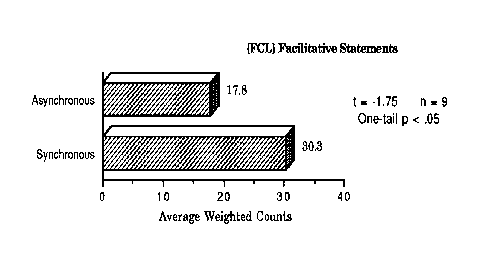
4.3.3 Performance on Nursing Diagnosis Task
With respect to performance and outcomes, the nursing diagnoses and nursing care planning discussed by each dyad were assessed for form and correctness. They were also rated on the degree to which they adhered to the principles and guidelines used to establish nursing diagnoses and care plans. The variables are listed on page @PageRef(tagndvar) and the rating criteria appear in Table @Ref(tagndcrit) on page @PageRef(tagndcrit).
A good example of adherence to principles and guidelines is shown in Figure @Ref(figexcerp3). Whereas some asynchronous discussions also demonstrated good adherence (as seen in Figure @Ref(figexcerp2)), most diverged from the main task. In Figure @Ref(figexcerp4), for example, the pair begins to discuss nursing interventions in their first exchange without adequately formulating and stating nursing diagnoses.
Figure 4-13: Synchronous Discussion Showing Attention to Principles
and Guidelines
n12: Okay. Is depression classified as a nursing diagnosis? n11: I don't think so because it is a medical diag. I can't remember how we are supposed to state it. Maybe self image deficit. n12: How about hopelessness based on the things he said have changed in his life and the way he sees himself. n11: Great! Shall we put it into their format? Hopelessness related to, as manifested by, etc. n12: Thats good, but I'm not sure exactly what to say its related to. There are a lot of things it could be manifested by. n11: How about related to perceived failure? Or, I can't think of a better word for perceived incompetence. n12: I like the perceived failure. It indicates how he feels and can result from his parents high expectations.
Figure 4-14: Asynchronous Discussion Showing Divergence from the Task
n22: Patient seems to be experiencing severe anxiety related to his low self-worth. Although his eating and sleeping habits have deteriorated, I believe his depression should be addressed first. If we can get him to talk more about the circumstances surrounding his attacks, I believe we will have a better chance at ameliorating his deteriorating eating and sleeping habits. Patient should be teamed up with a psychiatrist and possibly a therapy group. n26: I agree that his depression is a major priority and should be looked after first. The only way to overcome the depression would be for him to talk to someone about it. The therapy would in all likelihood do him good. I suggest that group therapy (after the initial one-on-one with the therapist) where people with problems like his and some that are worst (to give the perspective that there are bigger problems than his) so that he has a wall he can lean on for support.
Although separate variables were used to record the assessment of form and correctness of the nursing diagnoses and nursing care planning independent of one another, only their combined and averaged values are necessary to register the comparative outcomes of these dyad discussions. The graphs and statistics presented in Figure @Ref(fndncp1) show averages for the nursing diagnoses given first priority (ND1 = (NDF1+NDC1)/2), the nursing diagnoses given second priority (ND2 = (NDF2+NDC2)/2), and the nursing care planning (NCP = (NCPF+NCPC)/2). The two groups faired equally well in establishing the first nursing diagnosis, but the synchronous group did better on the second nursing diagnosis and on the nursing care plan. Similarly, as shown in Figure @Ref(ftotnd1) the synchronous dyads did better in terms of the total nursing diagnosis and care planning score (TOTNDNCP = (ND1+ND2+NCP)/3). This was true in regard to adherence to the principles and guidelines as well. Again, the t-test was used to demonstrate the inferential strength these differences.
Figure 4-15: Nursing Process Outcomes (1)
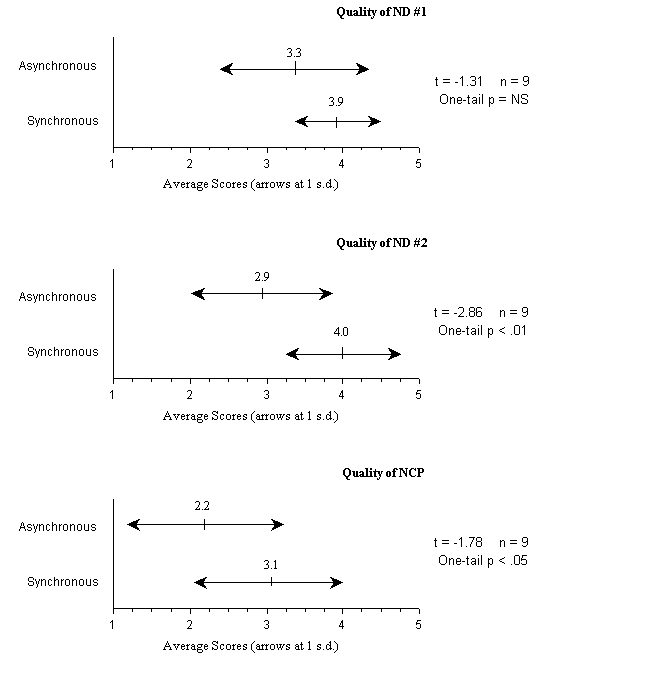
Figure 4-16: Nursing Process Outcomes (2)
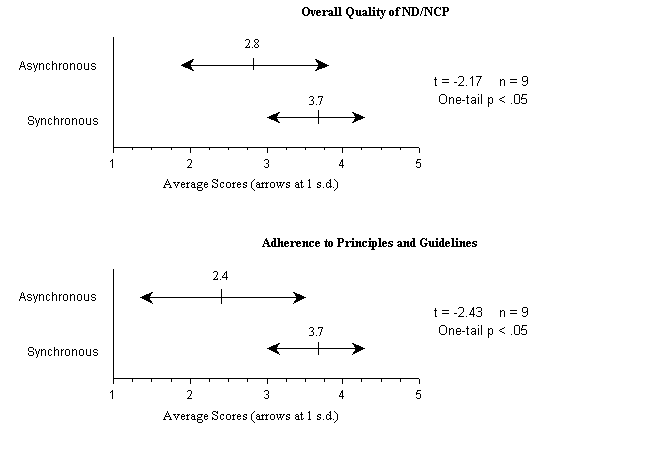
The issue of the relationship between the cognitive/cooperative activities and the nursing diagnoses and care planning outcomes was not addressed in the focus questions for this study. However, the intuitively expected association was cause for further investigation. The scattergrams and statistics presented in Figure @Ref(fcorr1) demonstrate that key cognitive activity and adherence to principles and guidelines have a positive correlation with total nursing diagnosis and nursing care planning scores (p < .05, Pearson). Cooperative activity, as represented by verbal elements coded {FCL} for facilitation, did not show a significant correlation with these outcome scores.
Figure 4-17: Cognitive/Cooperative Activity Correlated with Nursing
Process Scores
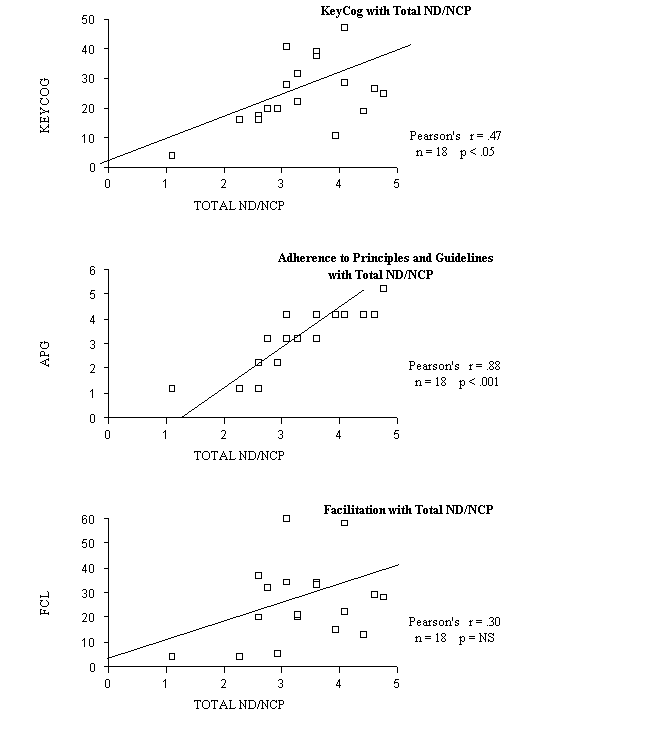
4.3.4 Participant Impressions and Reactions
Data on participant impressions and reactions to the use of computer-mediated communication for a dyad learning task were gathered from responses and comments on a post-task questionnaire, statements made in a debriefing interview, and personal comments contained in the transcripts of the online discussions.
The questionnaire was designed to elicit information about each subject's satisfaction or dissatisfaction with the nursing process content they developed, the cooperative interaction with their learning partner, and their use of the technology in general. It also provided space for individual comments (see Appendix @Ref(appposttask)).
The interview (see Appendix @Ref(appintschd)) was used to engage the subjects in a one-on-one, face-to-face situation in which they could discuss certain aspects of their experience. In particular, information concerning their use of the appropriate components and steps in establishing a nursing diagnosis was explored. Also, their opinion about the length of time provided for the task, the effect of interruptions or pausing in their discussions, and the relative intensity of their interaction at various points was recorded. They were also asked whether they thought the use of the computer to communicate was more or less difficult than dealing with the nursing issues covered in the discussions. Finally, they were asked to state what the best and worst aspects of the activity were.
In general, both groups of participants expressed great enthusiasm for the medium and for the opportunity to interact cooperatively with their classmates. There were a few minor complaints about the slowness of interaction due to either the medium or typing skills. Nevertheless, most subjects felt they had good interaction and that the medium was beneficial. In fact, the responses to the post-task questionnaire were so positive and consistent that additional statistical description would only be redundant.
The interviews were quite positive as well, but no patterns could be discerned from the subjects' comments on issues such as time, interruptions, pausing, and intensity of interaction. Most felt there was sufficient time (in either synchronous or asynchronous mode) and that the interruptions or need to pause in the online discussions were not a problem nor a benefit. In the same sense, it was not possible to pick out any pattern of intensity of interactive debate. Neither the subjects' responses nor the analysis of the transcripts revealed such a pattern, and certainly nothing indicated a difference related to the two modes. This was true in regard to "use of the computer" versus "understanding the diagnosis" also. That is, the participants were evenly divided on the issue and there was no pattern distinguishing synchronous users from asynchronous users.
The following are two samples of the comments written on questionnaires:
n35 - I felt scared at first, but by the second session I
felt quite relaxed and enjoyed the work. I feel I've
learned a lot more about diagnoses/care plans than I
did before, especially with all the "new angles" and
thoughts my partner had.
n22 - I believe the experience might have been better had I
been in direct contact (through computer) with my
partner to exchange ideas because active communication
seems to spur on more ideas.
From the interviews we have:
n17 (asynch) about the worst aspect: About the whole thing? Trying to come up with the nursing diagnosis. Sometimes you get stuck, and its like you're sitting there, and its like, hmm, time's running out. n5 (synch) about the best aspect: I like the idea of being able to diagnosis with someone else being there, I feel much more confident having someone to assure me that my ideas or their ideas are right, umm, I don't know, I just, I enjoyed doing this exercise and I found that it helped me alot to work with someone else and accept their ideas and realize that you know, maybe my diagnosis isn't right, and maybe their's isn't and find some kind of, I don't know ... [middle ground?] ... mmhmm.





